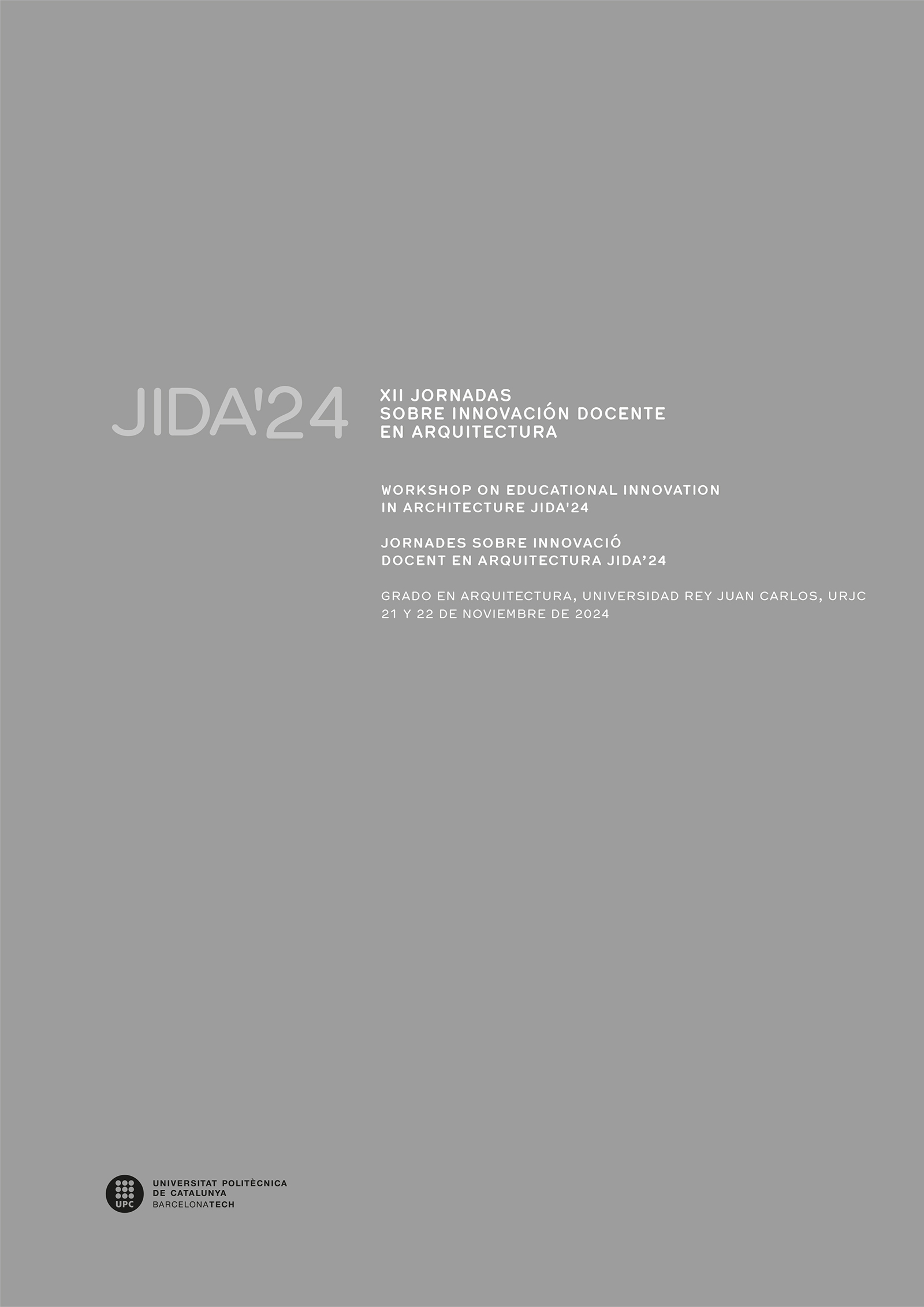Development of a materials library within the university library: analogue and digital link
DOI:
https://doi.org/10.5821/jida.2024.13223Keywords:
materials library, digital link, university libraryAbstract
Traditionally, students entering architecture studies came mainly from families that were involved in construction. Their practical knowledge of building materials was sufficient to complement the theoretical teaching they received at university on this subject. However, the situation has changed and the family background of students no longer guarantees this prior knowledge. Society, and the university, has fully entered the era of digitalisation. This has had an impact not only on the profile and skills of students, but also on the way they consult the building materials that are prescribed in their academic projects: they have left university libraries behind, in favour of browsers and websites. Thus, this joint initiative arose to create a collection of sample materials within a university library that links the analogue experience of materials with the digital knowledge on these samples that is available in libraries. The digital knowledge associated with each sample is selected in a cooperative way by the architectural students, under the supervision of the academic staff and with the help of an intern.
References
Addington, M., Schodek, D. (2005). Smart Materials and New Technologies: for architectureanddesign professions. Architectural Press.
Akin, F., Pedgley, O. (2016). Sample libraries to expedite materials experience for design: A survey of global provision. Materials & Design, 90, 2016, 1207-1217.https://doi.org/10.1016/j.matdes.2015.04.045
Arboleda-Pulgarín, A. M. (2023). Propuesta de implementación de una materioteca de soporte a la educación en una escuela de arquitectura superior. [Proyecto Final de Màster Oficial] UPCommons. https://upcommons.upc.edu/handle/2117/391681
Azcona-Uribe, L. (2021). Cómo integrar la creación de una biblioteca de materialesen la docencia. In: D. García Escudero & B. Bardí Milà (Eds.), JIDA’21 IX Jornadas sobre Innovación Docente en Arquitectura (pp. 450-461). Universidad de Valladolid. https://doi.org/10.5821/jida.2021.10566
Bonwell, C. C., Eison, J. A. (1991). Active Learning: Creating Excitement in the Classroom. The George Washington University.
Borch, I.T., Keuning, D., Kruit, C. (2004). Skins for Buildings: the Architect’s Materials Sample Book. BIS Publishers.
Dantas, D., Bertoldi, C. A. (2016), Sistema de catalogação e indexação de amostras de materiais orientado a projetos de design para uso em materiotecas. DATJournal, 1(2), 62-75. https://datjournal.anhembi.br/dat/article/view/29/22
Dent, A., Moryadas, A., Beylerian, G. M. (2005). Material ConneXion: the Global Resource of New and Innovative Materials for Architects, Artists, and Designers. Thames and Hudson Ltd.
Hegger, M., Drexler, H., Zeumer, M. (2017). Basics Materials. Birkhäuser.
Hegger, M., Auch-Schwelk, V., Fuchs, M., Rosenkranz, T. (2006). Construction Materials Manual. Birkhäuser.
Jansson, J. O. (2013). The economics of services: Microfoundations, development and policy. Edward Elgar Publishing.
Joudrey, D. N., Taylor, A. G., Miller, D. (2015). Introduction to Cataloging and Classification. Libraries Unlimited.
Lyons, A. (2007). Materials for Architects and Builders. Routledge.
Navarro Moreno, D., Lanzón Torres, M., Tatano, V. (2018). La biblioteca de materials como recurso didáctico. In: D. García Escudero & B. Bardí i Milà (Eds.), JIDA’18 VI Jornadas sobre Innovación Docente en Arquitectura (pp. 73-82). Universidad de Zaragoza. https://doi.org/10.5821/jida.2018.5443
Pedgley, O., Rognoli, V., Karana, E. (2016). Materials experience as a foundation for materials and design education. International Journal of Technology and Design Education, 26(4), 613-630. https://doi.org/10.1007/s10798-015-9327-y
Peters, S., Drewes, D. (2019). Materials in Progress: Innovations for Designers and Architects. Birkhäuser.
Riemer, K., Schellhammer, S., Meinert, M. (2018). Collaboration in the Digital Age: How Technology Enables Individuals, Teams and Businesses. Springer.
Robison, M., Shedd, L. (2017). Audio Recorders to Zucchini Seeds: Building a Library of Things. Libraries Unlimited.
Rognoli, V. (2005). Oltre le materioteche, DIID DisegnoIndustriale Industrial Design, 13, 86-91.
Scoble, R., Israel, S. (2016). The Fourth transformation: How augmented Reality & Artificial intelligence will change everything. CreateSpace Independent Publishing Platform.
Servei de Biblioteques, PublicacionsiArxius (SBPA). (2015). Enginy20. UniversitatPolitècnica de Catalunya. https://upcommons.upc.edu/handle/2117/80034
Spector, J. M., Ifenthaler, D., Isaias, P., Kinshuk, Sampson, D. (2010). Learning and Instruction in the Digital Age. Springer.



















